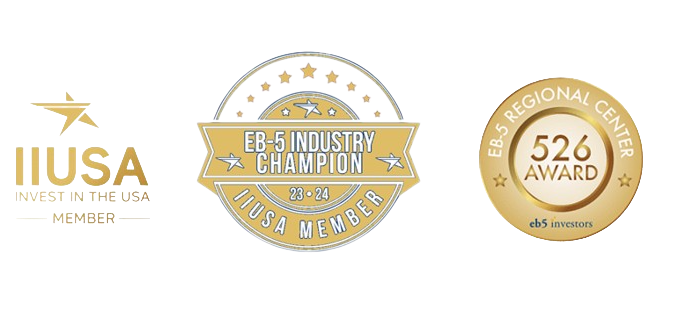- Do investors need to be actively involved in the day-to-day activities of Regional Center Projects?
- What are the advantages of investing in a rural project in a Micropolitan Area?
- May I invest less capital in a Targeted Employment Area (TEA) Project?
- Do I have to live where the project is?
- Can I make money with my EB-5 Investment?
- How is the EB-5 loan model different than the equity model?
- What is the EB-5 Immigrant Investor Program?
- What are the benefits of the Green Card?
- Who is eligible to receive permanent residency (Green Card)?
- Are EB-5 visas available to persons from any country in the world?
- Where can I find copies of relevant forms, laws, and regulations to study?
- What is the difference between a “conditional” and a “permanent” Green Card?
- What issue typically causes the most problems when applying for an EB-5 visa?
- How long must I remain in the United States each year?
- What is the difference between permanent residency and citizenship?
- What’s the best way to lower risk in an EB-5 Investment?
- What is a New Commercial Enterprise (NCE)?
- What is a Job Creating Entity (JCE)?
- What is visa retrogression?
- What are “Reserved EB-5 Visas” or “Set-Asides”?
- What are “Unreserved” EB-5 Visas?
- What is the Sustainment Period?
- What are the steps for processing an EB-5 visa application?
- If my I-526E petition is approved by the USCIS, what is the purpose of the Consulate application and interview, and how soon do I get my Green Card?
- After petition approval, can members of the family interview in different countries?
- What is an “escrow” account and when does the investor transfer the money into this account?
- How does the bank escrow account protect me against the risk of losing my money?
- What is Concurrent Filing for I-485 Adjustment of Status and how does it benefit EB-5 Investors?
- Who is eligible for Concurrent Filing?
- When can I apply for US citizenship?
- What is the minimum required amount of capital to be invested in order to apply for an EB-5 visa?
- Must I have previous business experience or education?
- Must I speak English?
- What is meant by the requirement that the investor’s assets be “lawfully gained”?
- If I want to move to the United States and invest in an EB-5 project with Houston EB5 Regional Center, do I have to live in Texas?
- Can an EB-5 investor from a retrogressed country apply for Concurrent Filing?
- How many direct and indirect jobs do I need?
- Can I travel outside the US for extended periods after I get my green card?
- What is a Regional Center and what advantages do they offer to EB-5 investors?
- Who should invest in an EB-5 Regional Center project?
- What are Indirect and Induced Jobs?
- Why is Job Creation safer with a Regional Center Project?
- Do I get faster Processing of my I-526E Immigrant Petition if I invest in a Regional Center project?
- What makes Houston EB5 unique?
How is the EB-5 loan model different than the equity model?
The two most common models for EB-5 investments are that of debt or preferred equity.
In the debt model, EB-5 investors make an equity investment in the project’s NCE (New Commercial Enterprise) which then loans the pooled EB-5 capital to the project’s JCE (Job Creating Enterprise). Debt models typically have finite terms with extension options, promissory notes, and a more senior repayment priority when compared to equity. It’s worth noting that 3rd Party Regional Centers profit from fundraising through the debt model, as they typically pay the EB-5 investors less than 1% and loans the EB-5 capital to a developer at 8-12%. This model can increase the risk that the EB-5 investors won’t be repaid their full investment due to the high sunk financing cost that the Regional Center added to the project and received before EB-5 investors are repaid.
In the preferred equity model, EB-5 investors make an equity investment in the project’s NCE which is usually the same entity as the JCE, therefore, the investors are equity owners in the project. Preferred Equity typically does not have a finite term, comes with a more senior repayment priority when compared to common equity, and receives payouts when the project is profitable or can sustain such distributions. This model can significantly reduce the risk that EB-5 investors won’t be repaid their full capital as it doesn’t burden the project’s cashflows with high sunk costs but rather gives the project more flexibility to be successful.

